Read. Imagine. Travel
Namaste! With the borders opening up in South Asia for the tourists (Srilanka & Nepal are already open and India opening up its borders from 15th November 2021), we are once again looking forward to welcome your esteemed clients in the Indian Subcontinent.
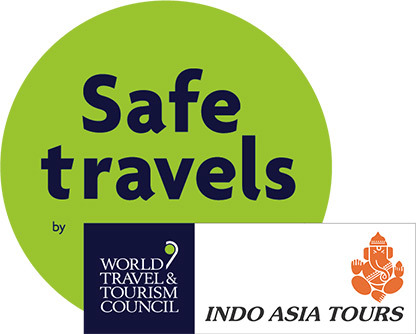
Recognized with the “Safe Travel Stamp”, from WTTC (World Travel and Tourism Council), we are aligned with the Safe Travel protocols, adhering to our responsibilities as a responsible tour operator and have adopted health and hygiene global standardized protocols.
While you and your clients plan a trip with us, let us take you through another journey covering the “Festivals of Sri Lanka”. Discover for yourself what makes this magical island So Sri Lanka in this short video!
Sri Lanka, the tiny teardrop shaped island, offers infinite experiences ranging from world-class historical sites and cultural marvels to verdant tea plantations, palm-fringed beaches, and thrilling national parks overwhelmed with wildlife. It is also home to the world's four main religions and is a land of endless festivals and celebrations that depict all life facets. Celebrated with great warmth and display, festivals in Sri Lanka offer a perfect opportunity to be a part of this beautiful country's traditions and cultural roots.
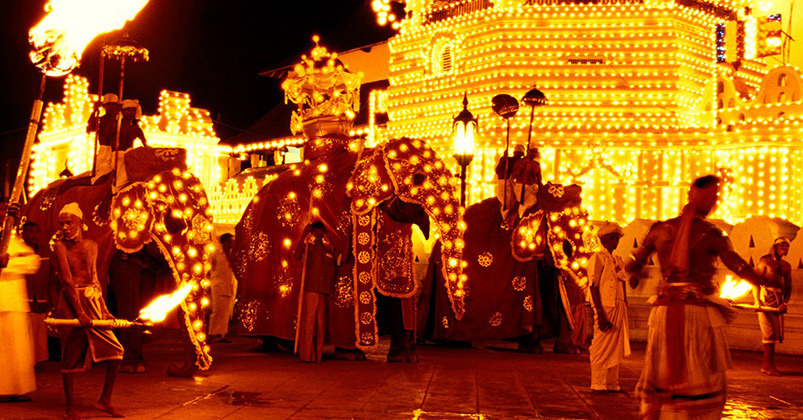
With the Buddhists and Hindus forming the largest social composition of the country, the festivals here largely revolve around these two religious beliefs. A small number of Christian festivals are also celebrated, thanks to the colonial lineage of the country. The ‘poya’ days of Buddhists, Hindu festivals like Tamil New Year and Maha Shivratri, Christmas, Vesak Poya (festival of lights) and the Sinhalese New Year are the major days of celebrations.
Some of the best festivals of Sri Lanka that one should experience are:
1. KANDY ESALA POYA PERAHERA
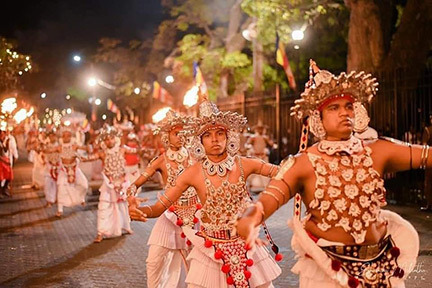
The Sinhalese term 'Perahera' implies a parade of musicians, singers, acrobats, dancers, and various other performers accompanied by a large number of decorated tuskers and elephants marching the streets to celebrate a religious event.
The Esala Perahera celebrated in Kandy is among the oldest and grandest of all Buddhist festivals celebrated in this beautiful island nation. This colorful festival features dancers, musicians, jugglers, fire-breathers, and decorated elephants.
It is celebrated in Esala (which generally falls in July or August), a month that is said to commemorate the first teaching given by Lord Buddha after he attained enlightenment. This festival lasts for ten days, and one can witness various festivities right through.
The festival is celebrated in honor of the Sacred Tooth Relic and the four 'guardian' Hindu Gods, Vishnu, Kataragama, Natha, and Goddess Pattini. During the Perahera, the Maligawa Perahera, a procession of the Sacred Temple of the Tooth, takes place in the evening and is joined by the other four processions honoring the four guardian Hindu gods and goddesses.
It is believed that the Kandy Esala Perahera procession takes place to beseech the gods' blessings to receive rains, to cultivate crops and enrich the kingdom's lands. The beseeching rituals are performed by carrying the sacred tooth relic of Lord Buddha through Kandy's streets, in a flamboyant and colorful way. The Kandy Esala Perahera is said to be among the most beautiful celebrations in Asia. One will have to witness this festival to believe it. Witness highlights of the spectacular parade of dancers, acrobats and music and the magical traditions of the Perahera!
2. DURUTHU PERAHERA
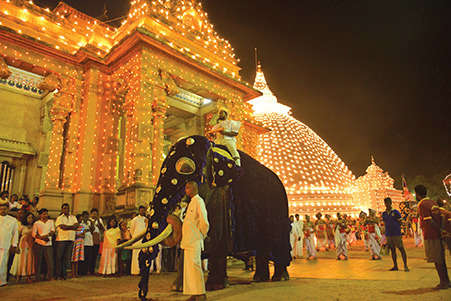
The Duruthu Perahera is among the most glorious cultural processions celebrated by devotees in Sri Lanka. The festival is celebrated annually during Duruthu (or January), a month in the Sinhalese calendar.
The main celebrations are organized at the historic Kelaniya Rajamaha Viharaya in a place called Peliyagoda, 11 kms from Colombo, annually during the Poya day, a pre-full moon time in January. This day holds importance to Sri Lankan Buddhists as it also marks the first visit of Lord Buddha to this island nation.
Started in 1927, the festival perfectly depicts the culture, age old traditions, and the grand heritage of Sri Lanka through the procession, many rituals, and ceremonies. This is why thousands of tourists flock to experience this festival and are left in awe.
The Duruthu Perahera consists of three stages. The festival begins with a range of religious sermons held each night, leading to the final celebrations. This is followed by a week of Pirith Ceremonies, and finally, all the proceedings end with a grand Perahera, which is held for three consecutive nights.
3. THAI PONGAL

The Thai Pongal is a Hindu festival which is celebrated worldwide.
It is also said to be one of the most traditional celebrations globally. The Thai Pongal is held on the first day of Thai month as per Hindu-Tamil calendar which generally falls in the second week of January every year.
|
Said to be a farmer festival or a harvest festival, it is dedicated to mother nature and her elements, as farmers heavily depend on nature's bounties to get a good harvest of their crop. It is said to be the celebration of the rain, the sun, the water, the soil, buffaloes, and cows.
While many people come to experience this beautiful festival, but only a few know that this festival is actually a 4-day celebration. The first day of the festival is called Bhogi, a day devotees burn their unwanted and old items. Day two, which is the main day of Thai Pongal, is dedicated to the God Surya, the Sun God. Preparation of the traditional sweet dish "Pongal" is the most important feature of Thai Pongal. Pongal is sweet rice made with milk, plums, jaggery, and spices like cardamoms and cloves.
Making Kolam is another very important feature of Thai Pongal. Kolam is a traditional design drawn by hand at the entrance of the house using lime powder and sometimes other natural colors.
4. NAVAM PERAHERA
 The Navam Perahera festival is celebrated in the Gangaramaya Temple, which is located in Colombo city.
The Navam Perahera festival is celebrated in the Gangaramaya Temple, which is located in Colombo city.
The temple is among the most famous Buddhist temples in Sri Lanka and is visited by thousands of devotees and tourists alike. The temple was constructed in the 19th century, over 120 years ago, to worship and learn Buddhism. It is also said that Gangaramaya is an internationally known institute due to the best collection of Buddhist artifacts and texts.
The Navam Full Moon Poya Day celebrated in February holds an important significance for Buddhists. And since 1979, the Gangaramaya Temple has organized this colorful and exuberant festival known as 'Perehera' to celebrate this day. The Perahera induces peace and harmony amongst the communities, regardless of race or religion, and is admired by everyone witnessing this festival. It takes place for two days where the main attraction is the parade of the Sacred Relic Casket on an elaborately adorned main tusker (elephant) of the parade.
Mask Dancers, Drummers, Kandyan Dancers, Stilt Walkers, Sword Dancers, and many other artisan parades during the Navam Perahera. All the events take place either late in the evening or at night, lit by flaming torches and are accompanied by Buddhist flag bearers, hundreds of monks, and traditionally ornamented elephants with their mahouts (keepers). This festival is all about vibrance, colorful celebrations, following the age old traditions and should not be missed during a trip to Sri Lanka.
5. SINHALA & TAMIL NEW YEAR

In April, people who plan to visit Sri Lanka are rewarded with funfilled festivities at the Sinhalese and Tamil New Year celebrations.
Even though most of the world welcomes New Year on 01st January, however, Sri Lanka along with few other countries has a calendar that marks the New Year differently.
The Sinhala and Tamil New Year celebration (Aluth Avurudda or Puthandu) generally begins on 13th April and ends on the 14th April, which is also the end of the harvesting season. This is also the time when the sun is directly above the island. Based on the sun's movement from house of Pisces (Meena Rashiya) to the house of Aries (Mesha Rashiya), Sri Lanka welcomes the biggest holiday with firecrackers, Avurudu music and games.
With almost every household following the auspicious calendar and the age-old customs and traditions, the New Year celebration in Sri Lanka displays colourful side of Sri Lankan culture and religious beliefs. With the Erabudu trees (Erythrina variegata) in full blossom and the musical notes of the Koha (cuckoo bird) marking the beginning of a new year, the whole country prays for a continued peace and prosperity.
The hustle and bustle in the kitchens start with the preparation of ambrosial sweetmeats. The air is infused with the tantalizing fragrance of Kavum, Asmi, Aluva, Kokis, Unduval, Athiraha, (special delicacies made as part of the celebration) and many other traditional delights in Sinhalese households across the island.
The official announcement of the New Year starts at dawn with the sound & rhythm of rabana (one sided traditional drum) and firecrackers. As the mood for New Year sets in, traditional oil lamps are lit, which truly is a sight to behold. Ladies of the house lights the hearth and boils a pot of milk, which signifies prosperity.
Once the rituals are over, celebrations are seen on the streets. People on this day play traditional games and the highlight of the day for many includes kamba adeema (tug-of-war), kotta pora (pillow-fighting), Lissana gaha nageema (climbing the greasy pole), and havari hengima (hiding the wig). So, if you are visiting Sri Lanka in April, be sure to indulge in this beautiful festival by visiting a local family.
6. VESAK POYA
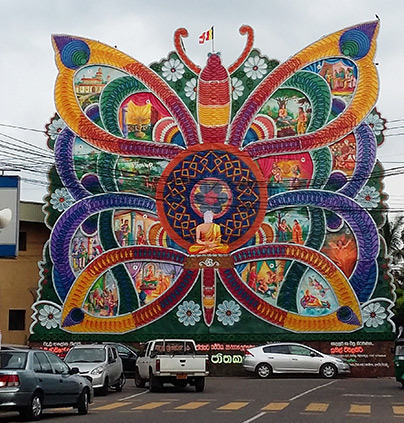
By now, you would have understood the importance of the full moon in Sri Lanka. Like all the other festivals, Vesak is also celebrated on the full moon day but in May.
Vesak Poya Day is considered as one of the biggest festivals of Buddhism. On this auspicious day, Buddhists celebrate important events in the life of Lord Buddha.
The first and most important event was the birth of Siddhartha Gautama in Lumbini, Nepal, in the area that was shaded with Sat trees. The second most important event was Siddhartha Gautam's enlightenment and transformation as the Buddha, ‘the Enlightened One’. The third most important event was the Parinirvana (nirvana after death) of Lord Buddha at Kushinagar, 2500 years ago.
Apart from Sri Lanka, many Asian countries following Buddhism, including Japan, Singapore, Taiwan, and India, celebrate Vesak Poya. During the festival, a lot of religious activities are organized, such as Bodhi Poojas, Sil campaigns, Dansalas (free distribution of food, coffee, tea etc.), Vesak devotional songs etc. If you ever visit Sri Lanka on Vesak Poya, be sure to visit a Buddhist monastery to enjoy this beautiful festival at its best. Enjoy Vesak Poya in the beautiful short video.
7. POSON FESTIVAL

Poson, a full-moon poya day, is celebrated as the arrival of Buddhism in Sri Lanka in the 3rd century BC. It is a festival of great religious and historical significance and is celebrated by Buddhists across Sri Lanka. Poson, which is organized on the full moon day in June, marks an event that happened 2,000 years ago when the Great Emperor Asoka's son, Arahat Mahinda, converted King Devanampiyatissa to Buddhism. Though the festival is celebrated throughout Sri Lanka, the main celebration is held in Mihintale, an ancient monastic complex of the royal missionary monk Mahinda who preached the first sermon to the ruling king.
Another center for great celebrations is at Anuradhapura, the ancient capital, which attracts many pilgrims, especially during this time of the year. During the celebration, people take part in the mass religious observances and the illumination of pageants.
For Buddhists, this holy day of Poson is the second most important day of the year, just after Vesak. On this day, hordes of devotees dressed in white attire climb the Mihintale hill top. They first visit the temple and then pray at the dagobas that adorn the nearby hillocks. Like Vesak Poya, during the Poson festival religious activities such as Bodhi Poojas, Sil campaigns, Dansalas (free distribution of food, coffee, tea etc.), Poson devotional songs etc. takes place throughout Sri Lanka.
Every festival narrates its own story and offers a chance to explore the roots of the nation. Celebrate the local festival of Sri Lanka and experience the origin of existing customs and beautiful traditions while you visit the country. We, at Indo Asia Tours, are all about the handcrafted tours, memories, and moments you take out of your trip, and believe us, this escapade will be a life-changing one!
|
Virtual Destination Training Program
|
 Thank you, patrons, for reposing faith in our destinations and enquiring for customised virtual destination awareness training programs. We are proud to conduct them successfully so far and are looking forward to hold similar virtual destination awareness training programs for your team or yourself or a virtual tour for your clients. Let us know the destination of your interest along with your convenient date / time and we will be happy to set up a program for you.
Thank you, patrons, for reposing faith in our destinations and enquiring for customised virtual destination awareness training programs. We are proud to conduct them successfully so far and are looking forward to hold similar virtual destination awareness training programs for your team or yourself or a virtual tour for your clients. Let us know the destination of your interest along with your convenient date / time and we will be happy to set up a program for you.
Send Request
|
Please feel free to write back to us at marketing@indoasiatours.com to share our thoughts on customized journeys covering the Indian subcontinent or take time to visit our website https://www.indoasia-tours.com. Be sure we will prepare the best program to make a memorable trip for your esteemed clients!
|
|




 The Duruthu Perahera is among the most glorious cultural processions celebrated by devotees in Sri Lanka. The festival is celebrated annually during Duruthu (or January), a month in the Sinhalese calendar.
The Duruthu Perahera is among the most glorious cultural processions celebrated by devotees in Sri Lanka. The festival is celebrated annually during Duruthu (or January), a month in the Sinhalese calendar.
 The Thai Pongal is a Hindu festival which is celebrated worldwide.
The Thai Pongal is a Hindu festival which is celebrated worldwide.
 The Navam Perahera festival is celebrated in the Gangaramaya Temple, which is located in Colombo city.
The Navam Perahera festival is celebrated in the Gangaramaya Temple, which is located in Colombo city.
 In April, people who plan to visit Sri Lanka are rewarded with funfilled festivities at the Sinhalese and Tamil New Year celebrations.
In April, people who plan to visit Sri Lanka are rewarded with funfilled festivities at the Sinhalese and Tamil New Year celebrations.
 By now, you would have understood the importance of the full moon in Sri Lanka. Like all the other festivals, Vesak is also celebrated on the full moon day but in May.
By now, you would have understood the importance of the full moon in Sri Lanka. Like all the other festivals, Vesak is also celebrated on the full moon day but in May.
 Poson, a full-moon poya day, is celebrated as the arrival of Buddhism in Sri Lanka in the 3rd century BC. It is a festival of great religious and historical significance and is celebrated by Buddhists across Sri Lanka. Poson, which is organized on the full moon day in June, marks an event that happened 2,000 years ago when the Great Emperor Asoka's son, Arahat Mahinda, converted King Devanampiyatissa to Buddhism. Though the festival is celebrated throughout Sri Lanka, the main celebration is held in Mihintale, an ancient monastic complex of the royal missionary monk Mahinda who preached the first sermon to the ruling king.
Poson, a full-moon poya day, is celebrated as the arrival of Buddhism in Sri Lanka in the 3rd century BC. It is a festival of great religious and historical significance and is celebrated by Buddhists across Sri Lanka. Poson, which is organized on the full moon day in June, marks an event that happened 2,000 years ago when the Great Emperor Asoka's son, Arahat Mahinda, converted King Devanampiyatissa to Buddhism. Though the festival is celebrated throughout Sri Lanka, the main celebration is held in Mihintale, an ancient monastic complex of the royal missionary monk Mahinda who preached the first sermon to the ruling king.
 Thank you, patrons, for reposing faith in our destinations and enquiring for customised virtual destination awareness training programs. We are proud to conduct them successfully so far and are looking forward to hold similar virtual destination awareness training programs for your team or yourself or a virtual tour for your clients. Let us know the destination of your interest along with your convenient date / time and we will be happy to set up a program for you.
Thank you, patrons, for reposing faith in our destinations and enquiring for customised virtual destination awareness training programs. We are proud to conduct them successfully so far and are looking forward to hold similar virtual destination awareness training programs for your team or yourself or a virtual tour for your clients. Let us know the destination of your interest along with your convenient date / time and we will be happy to set up a program for you.





